The truth about easy instruments for beginners
I cut through misconceptions and show the real skills that make an instrument feel easy. This guide matches beginner-friendly instruments to your style and goals, compares genres, maps realistic costs for gear and lessons, sets clear milestones, explains effective practice time, recommends age- and body-friendly options, and weighs teacher vs self-teach. Use the final checklist to choose with confidence.
Key takeaway
- Choose an instrument that fits your goals, body, and life—not just the easy label.
- Practice a little each day (15–30 minutes) to build reliable skill; see practical advice on how much time per day for music.
- Learn basic chords, rhythms, and one song first for fast wins.
- Play songs you love to stay motivated — read tips on staying motivated when progress feels slow.
- Use slow tutorials, apps, and occasional feedback to avoid bad habits; common traps are covered in seven beginner mistakes that slow music progress.
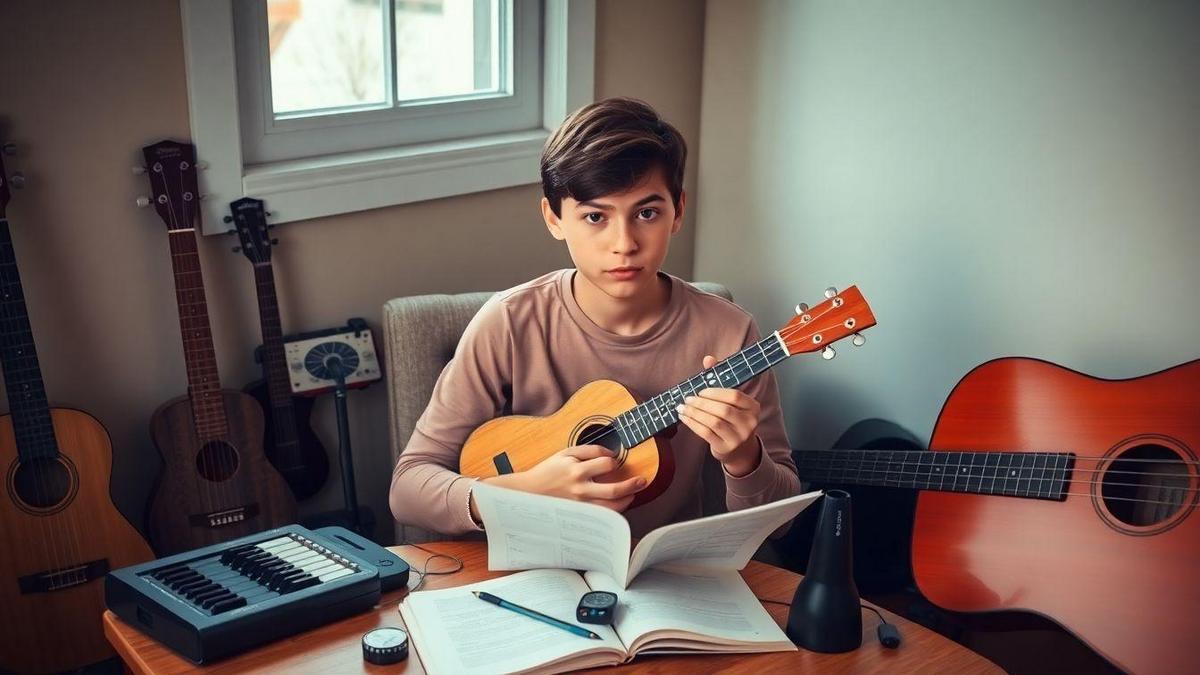
Cutting through common misconceptions
The truth about easy instruments for beginners is often misunderstood. These myths crop up all the time:
- Myth: Small instruments are always easier.
Fact: Size helps comfort but not rhythm, timing, or reading.
- Myth: If it sounds good right away, it’s easy.
Fact: Pleasant initial sound doesn’t mean it’s simple to master.
- Myth: No music theory is needed.
Fact: Theory accelerates progress and prevents dead ends — start with scales explained in plain English and basics like what chords are and why they matter.
- Myth: Kids always learn faster than adults.
Fact: Adults often learn more efficiently with focused practice.
- Myth: You don’t need lessons.
Fact: A few guided sessions can eliminate bad habits and save months; common mistakes and how teachers help are discussed in seven beginner mistakes that slow music progress and the role of practice in talent vs practice.
The real skills that make instruments feel easy
Rather than a single easy instrument, look for one that matches your current skills or what you’re willing to build:
- Rhythm & timing — if you naturally keep a beat, percussion and drums feel natural.
- Finger coordination — guitar and piano reward independence; short daily drills help.
- Breath control — wind and brass need breath work; singing is good prep.
- Ear for pitch — helpful for violin, cello, and playing by ear; try musical intervals made simple.
- Strength & endurance — bass and trombone require stamina.
- Hand size & reach — try instruments in person.
- Reading music vs tabs — tabs are faster for some; reading opens more options, start with how to read chords and sheet music.
- Immediate sound vs long-term control — ukulele and recorder sound okay fast; violin and oboe need technique.
Quick myth vs fact checklist
- Myth: Any four-string instrument is easy.
Fact: Finger pressure and fretting accuracy matter.
- Myth: You can learn an instrument in a weekend.
Fact: You can learn a song; reliable skills take weeks or months.
- Myth: Cheap gear is fine for beginners.
Fact: Poor setup blocks progress — see options in 5 affordable instruments perfect for beginners.
- Myth: Talent makes everything easy.
Fact: Smart practice beats raw talent — read more on talent vs practice.
- Myth: Teachers are only for advanced players.
Fact: Good teachers save time and keep you motivated early; check common pitfalls in seven beginner mistakes.
Match instrument to your music style and goals
Ask these three things: what music do you love, what do you want to do, and what can you spend? Treat instruments like shoes — they must fit your style, body, and budget.
- Ask about style: favorite songs, artists, bands.
- Clarify goal: learn songs, join a band, write, record, or relax.
- Check budget and space: instrument, amp, noise limits.
- Note physical limits: hand size, breath, mobility.
- Recommend 1–2 beginner-friendly instruments and a fast learning path — start with our guide to choosing your first instrument without regrets.
Genres and beginner instruments (at a glance)
| Genre | Best beginner instruments | Why it fits beginners |
|---|---|---|
| Pop | Ukulele, Keyboard, Acoustic guitar | Quick songs, simple chords, sing-along |
| Rock | Electric guitar, Bass, Drums | Clear band roles; many beginner lessons — compare guitar, keyboard, or drums for fit |
| Folk/Americana | Acoustic guitar, Banjo, Harmonica | Song-focused, simple chord progressions |
| Jazz | Keyboard, Saxophone, Upright bass | Steeper theory; piano gives visual help |
| Classical | Violin, Piano, Cello | Structured learning with graded methods |
| Electronic/EDM | Synth, MIDI keyboard, DAW | Fast results with loops and presets |
| Singer-songwriter | Acoustic guitar, Piano, Ukulele | Great for writing and solo performance |
| Blues | Electric guitar, Harmonica, Piano | Pattern-based; feel beats theory early on |
Remember: The truth about easy instruments for beginners depends on the music you want to make. A beginner sax for jazz is harder than a ukulele for pop.
How goals change what’s easiest
Goals flip easy into practical picks:
- Learn songs fast — Ukulele, Keyboard, Acoustic guitar (simple chords, instant results).
- Play with others — Electric guitar, Bass, Drums (defined roles, rhythm training).
- Record & produce — MIDI keyboard, Guitar, Microphone DAW (layer parts at home); try writing with writing your first melody without overthinking.
- Compose & arrange — Piano, Keyboard, DAW (visual layout of notes); reinforce theory with scales explained.
- Perform live & sing — Acoustic guitar, Keyboard (accompany vocals).
- Therapy / relaxation — Ukulele, Handpan, Piano (soothing tones, low pressure).
A quick decision flow to pick now
Answer and pick:
- Want to sing with it? Yes → Acoustic guitar or Keyboard.
- Join a band? Yes → Bass, Drums, Electric guitar.
- Space/noise a concern? Yes → Ukulele, Keyboard, Electronic setup with headphones.
- Tight budget? Yes → Ukulele or entry-level keyboard; see wallet-friendly picks in affordable instruments for beginners.
- Quick songs or deep theory? Quick → Ukulele/Guitar/Keyboard; Theory → Piano/Violin/Saxophone.
Quick combos:
- Pop fast progress low budget → Ukulele.
- Singer-songwriter live → Acoustic guitar.
- Electronic home production → MIDI keyboard DAW.
- Play in a band low learning curve → Bass.
- Classical formal study → Piano or Violin.
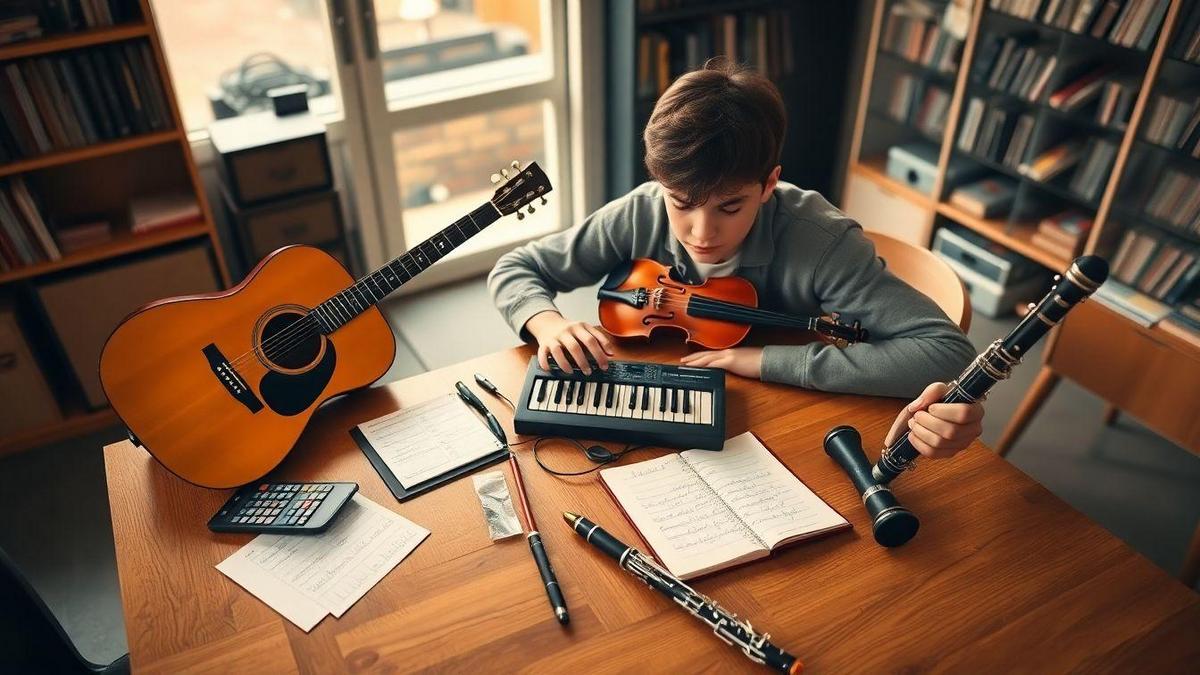
Real cost: instrument, accessories, lessons, upkeep
Split costs into clear buckets so you can plan.
Typical ranges:
- Instrument (new): $100–$1,200 depending on type.
- Instrument (used): often 30%–60% cheaper.
- Essential accessories: $20–$200 (case, tuner, picks, reeds).
- Lessons: $20–$60 per 30–60 min; online can be cheaper.
- Maintenance & repairs: $30–$200/year.
- Extras (apps, books, strings): $0–$200/year.
Quick table:
| Item | Typical low | Typical high |
|---|---|---|
| New beginner instrument | $100 | $1,200 |
| Used instrument | $50 | $700 |
| Accessories | $20 | $200 |
| Lessons (per month) | $80 | $360 |
| Upkeep (annual) | $30 | $200 |
Also consult resources on lesson rates and teaching costs when budgeting for instruction.
The truth about easy instruments for beginners: a ukulele may feel easier to start, but other options give quick wins depending on what you practice. For budget-friendly instrument ideas see 5 affordable instruments perfect for beginners.
Renting, buying used, and when to upgrade
- Renting: pros — low upfront cost; cons — monthly fees, no ownership.
- Buying used: pros — big savings; cons — possible repairs. Always inspect.
- Buying new: pros — warranty and predictable setup; cons — higher cost.
Decide by expected commitment:
- Play <1 year → rent.
- Want to stick but need savings → buy used and pay for inspection.
- Committed and can afford → buy new.
For a practical breakdown of rent vs buy options try the renting vs buying guide.
Upgrade when the instrument limits progress (buzzing, broken parts, size issues).
Simple beginner budget plans (first year)
Basic (budget-friendly):
- Used instrument $100–$250, accessories $30–$60, lessons $80/month → Total ~$260–$440.
Mid (balanced):
- Good used/entry new $300–$700, accessories $50–$120, lessons $200/month → Total ~$650–$1,120.
Invested (fast progress):
- New entry/mid $700–$1,200, accessories $100–$200, lessons $360/month → Total ~$1,310–$1,910.
Try a 3-month trial. If you love it, upgrade; if not, stop and save.
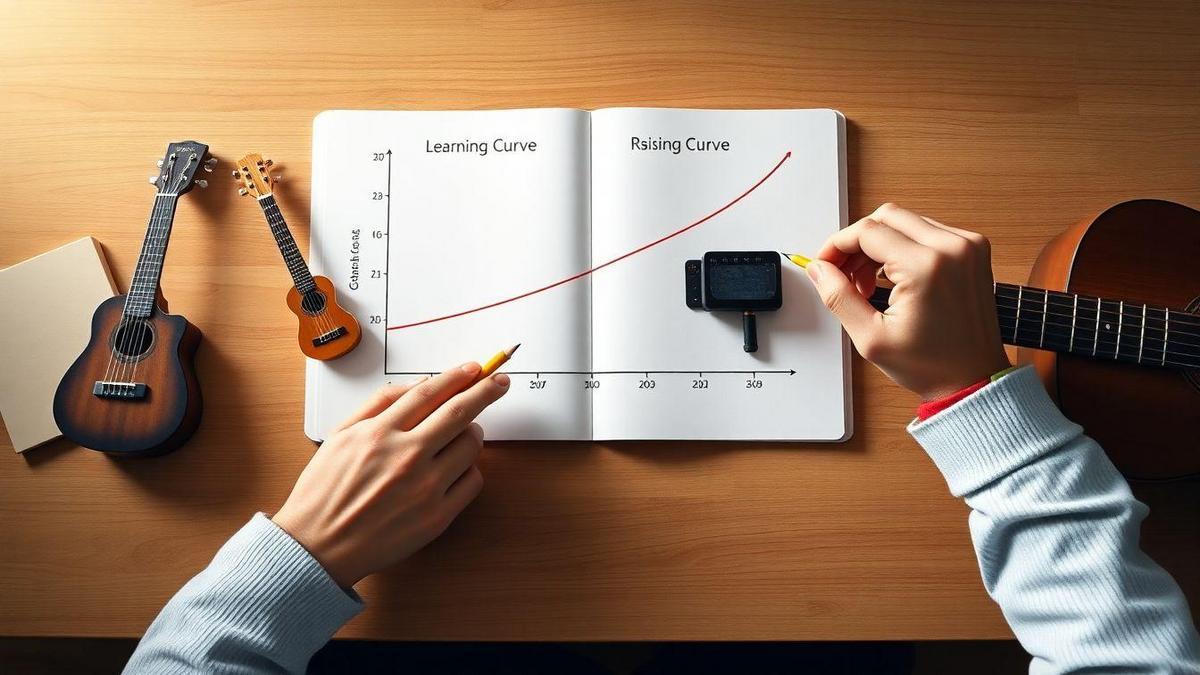
Learning curve, milestones, and practice that speeds progress
When judging learning curve, look at:
- Early wins (play one song quickly).
- Physical skills (finger stretch, breath, coordination).
- Basic theory required.
For structured warm-ups and routines, see practical practice tips and routines.
Quick milestones (visible and motivating):
- Tune and hold comfortably.
- Play one clear note.
- Learn one chord (or scale) cleanly — start with simple scales and core chord shapes.
- Play a simple song (2–3 chords or basic melody).
- Keep one song steady for 30 seconds.
Practice plan:
- Daily: 15–30 minutes most days; see sample schedules in how to create a simple practice routine.
- Mini-sessions: two 15-minute blocks (warm-up; song work).
- Session structure: Warm-up 3–5 min; Skill work 7–15 min; Song practice 5–10 min.
- Change focus every 7–10 days to avoid boredom — make it fun with ideas from making practice fun instead of a chore and overcome avoidance with how to stop procrastinating on music practice.
Timeline (with steady daily practice):
- Week 1: tune one clear note.
- Week 2: one chord clean.
- Week 3: two chords simple rhythm.
- Weeks 4–6: three chords steady one full song.
Support learning curves and plateaus with tips from staying motivated when progress feels slow.
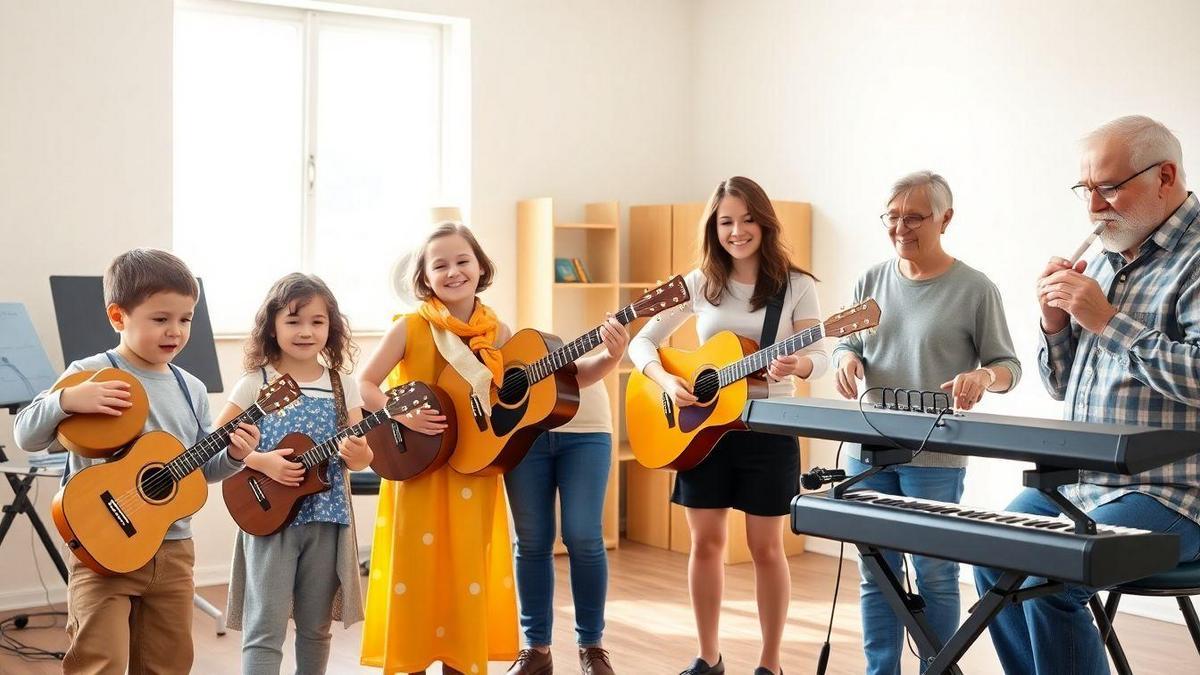
Choosing instruments by age, size, and physical needs
The truth about easy instruments for beginners depends on the player’s body and goals. Ask:
- Can they hold the instrument for 5–10 minutes?
- Can they form basic notes without pain?
- Does it feel fun, not work?
For guidance on ergonomics and safe playing, see advice on physical considerations for players.
Physical checks to do in-store or at home:
- Size: reach three frets on guitar/ukulele; check weight.
- Breath: try a five-second steady breath for winds.
- Finger strength: press strings/keys for a few seconds.
Age-friendly suggestions:
- Ages 3–6: small ukulele, toy keyboard, simple percussion.
- Ages 6–10: 1/2 or 3/4 violin, ukulele, recorder.
- Teens: full-size acoustic (light action), full keyboard, electric guitar.
- Adults (beginners): ukulele, soft-string guitar, keyboard, harmonica.
- Seniors: ukulele, keyboard with adjustable touch, hand percussion.
Rule of thumb: if it causes pain or discouragement within 10 minutes, try something else. For practical buying options see affordable starter instruments.
Teacher vs self-teach: apps, videos, and private lessons
Ask: what are my goals, how fast do I want progress, and what’s my budget? The truth about easy instruments for beginners: none are effortless—some offer faster early wins, especially with guided feedback.
Comparison:
- Apps: low cost, fast for basics, automated feedback. Great for drills and habit building — pair with a short routine from how to create a simple practice routine.
- Video lessons: low–mid cost, moderate progress, no personal feedback. Good for repertoire; see an overview of music education approaches.
- Private teachers: mid–high cost, fastest progress, direct tailored feedback. Best for fixing technique quickly.
When a teacher gives faster results:
- You need posture/technique correction (fretting, bow hold).
- You have a deadline (wedding song, audition).
- You’re plateauing after a month — avoid plateaus with techniques in seven beginner mistakes.
Recommended combos:
- App for daily drills weekly video lessons monthly private check-in.
- Or app one in-person lesson in month one, then videos and occasional teacher check-ins.
If nerves are an issue at the start, try strategies from overcoming the fear of starting music.
Maintenance, portability, and low-maintenance starter gear
Maintenance and portability determine how often you’ll play. Easy can mean low upkeep or a gentle learning curve — rarely both.
Tuning & repairs:
- Some require daily tuning (acoustic guitar, violin); keyboards need none.
- Consumables: strings, reeds, pads. Replace before they ruin sound.
- Typical consumable costs: strings $5–$20; tuners/peg service $20–$100.
Portability checklist:
- Can I carry it easily? Practice quietly with headphones? Fit in daily life?
- Top portable picks: Ukulele, compact keyboard (with headphones), travel guitar, violin, harmonica/recorder.
Low-maintenance starter gear list:
- Ukulele (soprano/concert) or compact keyboard
- Tuner (clip-on or app)
- Soft case/gig bag
- Spare strings/reeds
- Picks, strap, small stand
- Headphones for digital instruments
- Cleaning cloth and small toolkit
For budget-friendly starter options and what to expect from used gear, see affordable instruments perfect for beginners and the rent vs buy guide.
Setup steps: inspect, tune, add strap/stand, store in case after each session.
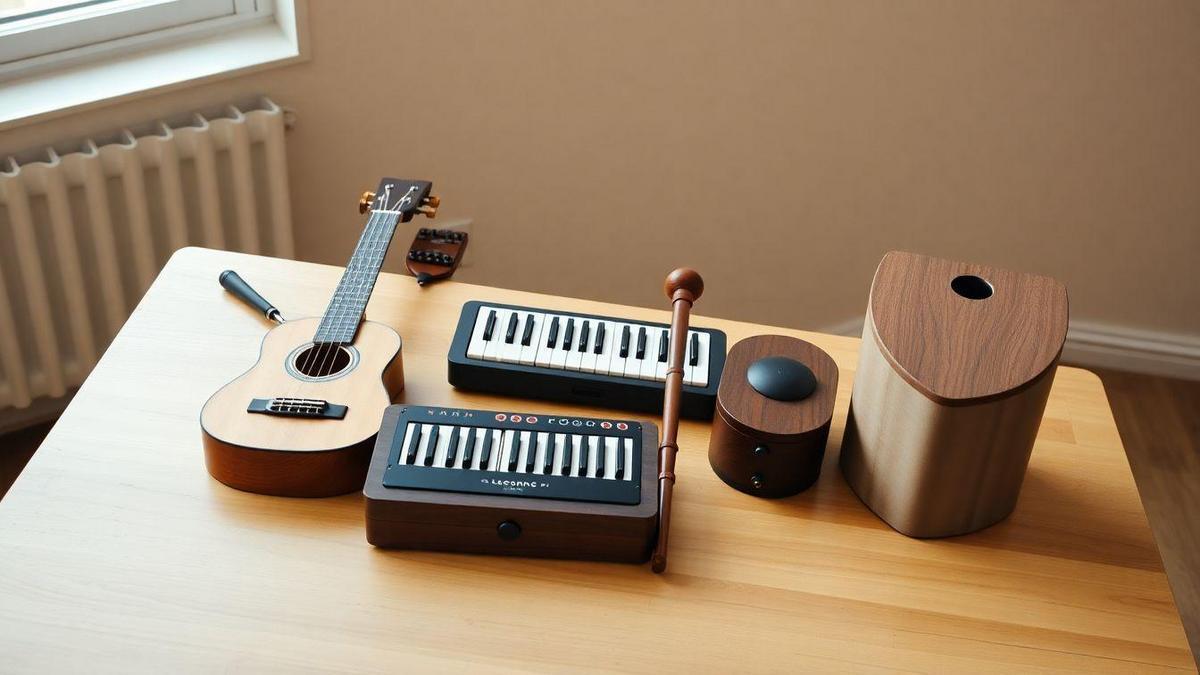
Ranking popular starter instruments
I score by cost, speed of early wins, and versatility. Totals reflect average beginner experience.
Highlights:
- Ukulele — quick chords, cheerful tone, low cost. Best for fast fun and social playing.
- Keyboard — visual layout, wide sound choices, best for songwriting and versatility.
- Harmonica — portable, immediate sound, great for travel and bluesy riffs.
- Recorder — cheapest, great for kids and melody practice.
- Guitar — huge stylistic range; early finger pain but high long-term payoff.
If you’re still torn between paths, compare options with the practical framework in guitar, keyboard, or drums: which one fits your style? and budget-friendly options in 5 affordable instruments.
The truth about easy instruments for beginners: ukulele, harmonica, and recorder give fast musical wins; keyboard and guitar offer broader growth over time.
Step-by-step method to choose the right beginner instrument
- Ask key questions: goals, budget, time, musical style.
- Score answers 1–5 and shortlist instrument families.
- Try instruments in person for 10–15 minutes each. Check comfort, sound, and playability — follow the checklist in how to choose your first instrument without regrets.
- Consider renting or buying used to lower initial cost — see renting vs buying.
- Commit to a 3-month trial with daily short practice. If 8 of 10 checklist items (below) pass, buy or rent.
Decision checklist before buying:
- Goal match.
- Budget fit (instrument accessories lessons).
- Comfort (10 minutes without pain).
- Sound you enjoy.
- Playability (action, keys, valves feel good).
- Size fits your body/hands.
- Future growth not blocked.
- Return/trial option available.
- Support (lessons, tutorials, teachers exist).
- Extras budgeted (case, maintenance).
If you check 8/10, commit. If not, keep testing.
Conclusion
There’s no one-size-fits-all answer: The truth about easy instruments for beginners is that easy depends on goals, body, and consistent practice. Pick an instrument that fits like a shoe—comfortable, motivating, and realistic for your schedule and budget. Start simple: choose one instrument, practice 15–30 minutes daily, and focus each session on one milestone—tune, one chord, then one song. Use apps, videos, and occasional teacher feedback to avoid bad habits. Rent or buy used if unsure. Track small wins and celebrate progress. For perspective and lessons learned, see what I wish I had known.
For more practical guides like this, visit https://clickneutro.com.
Frequently asked questions
Are some instruments really easy to learn?
Yes. But the truth about easy instruments for beginners is they still require work. Some offer faster early wins (ukulele, recorder, harmonica), but steady practice matters most — read about talent vs practice.
Which instrument should a total beginner start with?
A common pick: ukulele. Soft strings, small neck, and simple chords make it fast to learn a few songs. See budget-friendly options in 5 affordable instruments.
How fast will I get good?
With 15–30 minutes daily focused practice, you can learn a simple song in 2–4 weeks. Reliable musicianship takes longer—months to years—depending on goals. Build a routine with how to create a simple practice routine and keep momentum using motivation strategies.
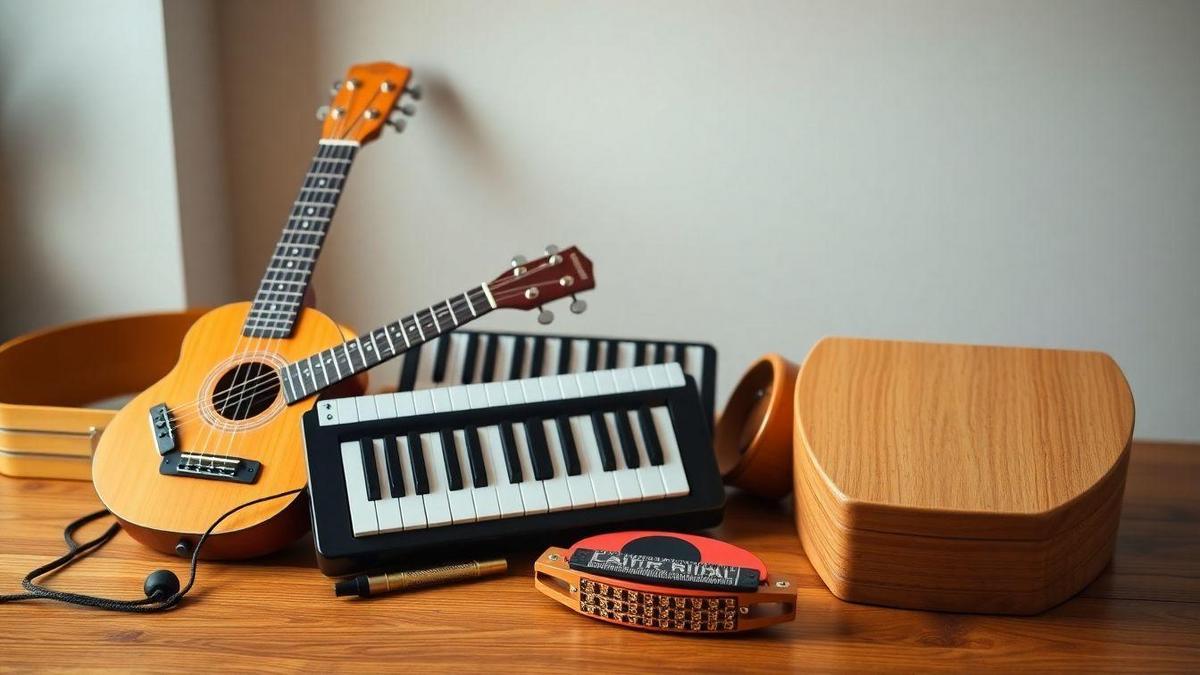
1 comentário em “The truth about easy instruments for beginners”